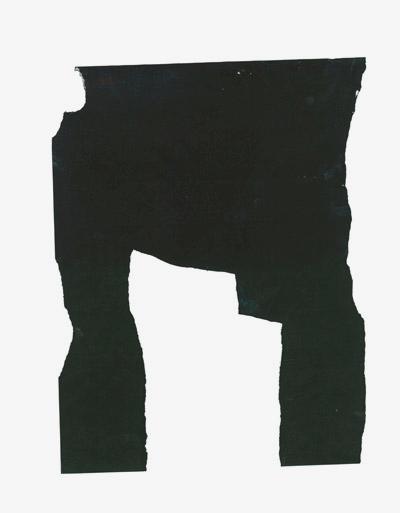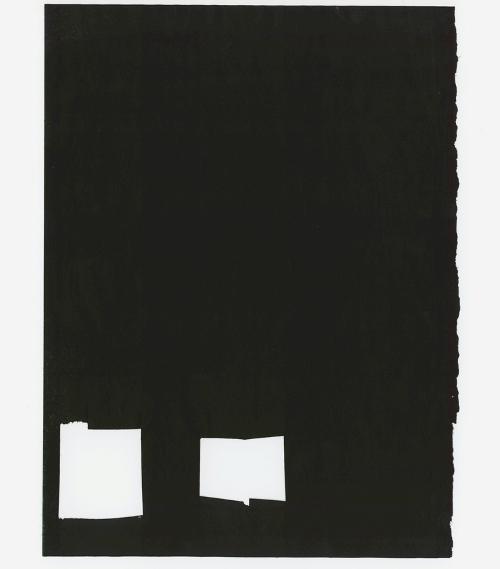AUTHOR: IVO MARTINS IMAGE: PEDRO SOUSA VIEIRA - PÁGINAS [DETAILE] (2011)
EDITION: (Catalogue) Centro Cultural Vila Flor DATE: April 2011
The capacity to conceptualise the world and the power of construction that such a skill provides us with are
decisive moments in art’s survival in relation to the countless inevitable biological impositions to which we have
been subjected in the past and continue to be so in the present, and from which we cannot escape - that is, faced
with the immediate oblivion of that which we do and with each of us facing our rapidly impending death. It was
thanks to this potential for creation, based on an anti-verbal sensitivity (in the sense that it does not directly
depend on language), that we have been able to imagine counterfactual propositions that have broadened our
minds, granting us with the means capable of solving the problems of existence and providing us with the
weapons to allow us to efficiently fight against the extinction of our species.
From this primordial experience of Man faced with a hostile and implacable nature, with this conflict taking on
an impressive degree of violence, we go on to a moment that has made us believe that we would live out a
different time, marked out by many people as more human and civilised. Through science and technology we
have discovered other means of survival and we have found new processes of prolonging each person’s life in
time, with this passage presupposing the elaboration of an idea of future, rooted within Man as a form of cultural
construction, as the moment from which we start to think that by using reason we will be able to control the
alterity of the natural environment and bringing up within us a strange aspiration to domination over all nature,
now having been converted into an entity subjected to and submitted to the in the meantime acquired human
capacities and knowledge. The individual who was formed through this change would have everything to be a
creator of suppositions and an experimenter of thoughts, possessing an imagination that would perfect his
specialised cognitive tools, allowing him to be able to separate the real world from the make-believe one.
Unfortunately that man has convinced himself that he would be able to achieve a high sophistication of
mechanisms of rational separation that isolates the real worlds from the false ones, and in this sense that it would
be possible to build a perfect society/place to which he would never have gone without having passed through a
sort of seduction of the conscience, a phenomenon that occurs when we are faced with a work of art. Thus the
incapacity to know the dimensions of the real and the unreal is successively heightened as domination over
nature is increased. Art’s main problem nowadays is a reflection of this state of things: the fact of being set within
a system that needs to permanently feed itself so as to survive and which within this process creates simulacra
and false, fictional realities (of the order of the economic and the financial) which distort its essence. Thus, and
having removed the possibility of establishing a frontier between realities, from this moment on we live out a
widened fiction about human life in which the discovery of a universally desired truth will necessarily have to
involve the detection of unintentional errors or through the insidious propagating of programmed lies. Art
survives in this world, in which enormous quantities of time and resources are spent in creating and experiencing
fantasies and fictions, through the mere exploration of Man’s natural fascination for these two dimensions,
making this propensity a virtual vice. In order to manage to make this alienating state of excitement last we are
bombarded on a daily basis by all kinds of pre-formatted products and fictional dramatic performances.
Pedro Sousa Vieira’s work appears within a sort of counter-cycle in relation to this dizzying flux of information
and merchandise into which the highly mediatised and spectacle-orientated art system has been turned. We do
not know whether there will be much more space and time for observations on the plastic images reflected in the
works of painting or drawings on paper to be carried out, these primordial states of observation and passion for
art through which we appreciate the beautiful and thus respond to that which Kant calls the presentation of the
object - as we see it or hear it in our imagination, as it comes to us in the theatre of the mind. This process of
apprehension of artistic experience supposes another regime of time and another breathing of the work that are
not compatible with the multi-dimensional aspect of the era of the virtual and of simulation.
The world is full of utilitarian, useless and in some cases excessively mercantilist simplifications that determine
the constant resurgence of many forms of populist actions to acquire cultural products and which have been used
in the several different doctrines /expedients of salvation adopted by those who act in the art field. Current
rhetoric aims only at justifying the market as an unjustifiable moment of a system that insists on perpetuating
itself through the purchase and sale of objects, accompanying the decadence and decline of contemporary
societies. If we adopted a thesis of the “Darwinist” kind and tried to explain lack of sociability and individualist
isolation as due to the obligation of our living in a world separated by customs barriers of aesthetic knowledge,
we would be in an inhuman state of apparent justifying inevitability that would rationally prevent us from
imagining all kinds of scenarios /changes and of situations /alterations located beyond direct awareness of
things. In this sense art has taken on a non-radical transforming role in the present time. It acts on an immense
field of sociological material and is always ready to occupy the available occupation space available,
transforming images into more “gazes”. Each work transmits a “gaze” to us when that gaze already comes from
another gaze, just as takes place when we observe images produced by the multiple advanced techniques of
reproduction and communication, its content becomes a subject matter/news item, an act that divulges and
propagates the void of time spent on these operations of transmission. And what we find disseminated all over
the place are mere phantasmagoria, allegorical acts, devitalised works of art, rubbish/products exhibited in
careful organizations of material produced for the most banal gaze. These products no longer have the ambition
to establish any type of order or connections on a context that was previously seen as chaos waiting to be
organised. Everything is lost in an immense net of hurried relationships and in the urgency of business and deals.
This incapacity to sense the universal has created a world full of segmentations, parts that are not susceptible to
be associated together and reconstructed within a minimally comprehensible whole, with this being the moment
in which all that is left and that one does not know what it is belongs to the archive of a time called the past. The
context in which things take place today is very altered; there have been deep changes and splits in the universal
views of the world, views constructed on a reality that in the past was seen in a monolithic and unilateral manner,
set within a regular and monopolistic notion of time, which allowed us to understand it as history. Today we are
only left with fragments of that time. The past has been altered, shifting the current coordinates of our
understanding. In that sense the strategy continuously used by Pedro Sousa Vieira, involving quoting and
transforming the image, its recreating from the ballast that has survived, and with us knowing that we are
dealing with the impossibility of the emerging of anything new or even the proposition for the construction of a
work as we are tragically aware that everything is just the margins or footnotes of history, has become an
unavoidable artistic practice of decoding the world and our time.
TRANSLATION: DAVID ALAN PRESCOTT



